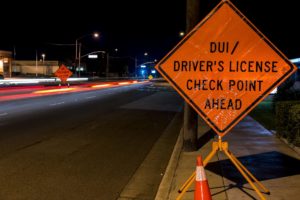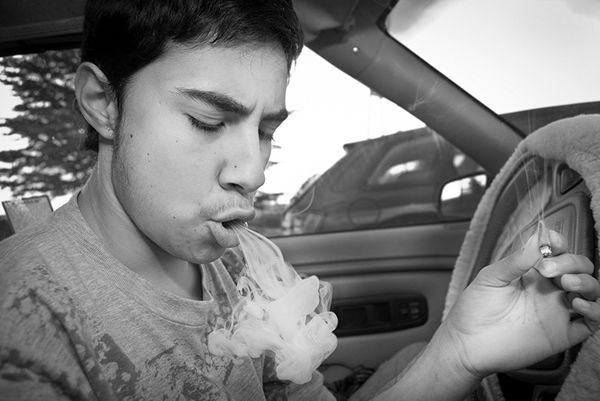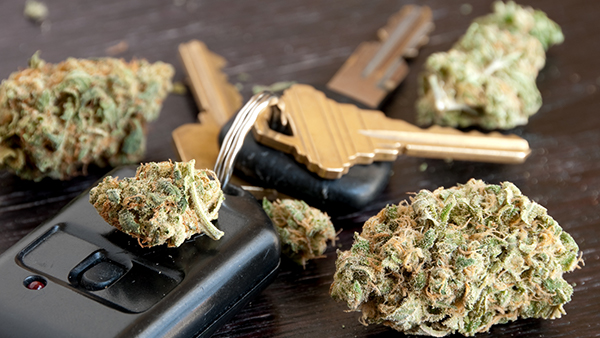Everyone knows that they shouldn’t drink and drive, or else they are risking a DUI. But, did you know that there are several types of DUI charges with different penalties? Not only that, but there is also a DUI you can be charged with for smoking marijuana and driving, too. Your best bet is not to drive while under the influence of any drug. This is the only way to keep you and others around you safe. Plus, it’s illegal to drive under the influence of both alcohol and marijuana in California.
For more information on the different types of alcohol and marijuana DUI charges, keep reading.
California DUI Charges – Alcohol
You may think that driving under the influence of alcohol and getting pulled over is the only way to get a DUI. However, there are various types of DUI charges a driver may face in California depending on the circumstances. Below are the main types of DUI offenses you can get charged within California.
Open Container Law
It is illegal for any person in a vehicle to consume alcohol while that vehicle is in motion. This applies to the driver and passenger(s). Any alcoholic beverages should be thoroughly sealed and placed in the trunk for transport.
 A container is considered open if:
A container is considered open if:
- Any of the contents inside are missing
- The can/bottle is open or the seal is broken
- The alcohol is in a cup or thermos
The penalty for this offense is typically an infraction, not a criminal offense. It’s punishable by a maximum $250 fine. However, if you are a driver or passenger under 21 years old, you will face a misdemeanor. This is further explained below.
Misdemeanor DUI
In California, the majority of DUI charges are considered misdemeanor offenses. The penalties for this charge may include driver’s license suspension, jail time, a maximum $1,500 fine and up to 30 months of DUI school. Your criminal history, accident involvement, speed and other factors may determine whether a DUI is charged as a misdemeanor versus a felony.
Felony DUI
A DUI may be charged as a felony if there are aggravating factors. Aggravating factors may include, but are not limited to:
 If you have had three or more previous DUIs within the past ten years
If you have had three or more previous DUIs within the past ten years- Whether you caused injury or death to someone else while driving under the influence
- If you have one or more prior DUI felony convictions
The penalties for a felony DUI offense may include 16 months to 16 years in state prison, a maximum fine of $5,000 plus restitution to any injured parties, up to 5 years of driver’s license suspension and a minimum of 18 months in DUI school.
Manslaughter DUI
If a person drives under the influence of alcohol or drugs and kills someone, they may be charged with vehicular manslaughter while intoxicated. Depending on whether the death is a result of ordinary or gross negligence, the driver can be charged with a misdemeanor or felony. Penalties include a maximum of one year of jail time for a misdemeanor charge and a maximum of 16 years of jail time for a felony. Your license will also be suspended upon conviction.
Excessive BACÂ DUI
If a driver has a BAC (blood alcohol content) that measures .15% or higher, they will be charged with an excessive BAC offense. This type of offense involves more extreme penalties, such as a minimum 10-month driver’s license suspension, jail time and nine months of DUI school.
Here are the BAC levels of impairment:
 BAC .08%. At this level of intoxication, you will start to exhibit impairment of balance, speech, reaction time and reasoning. This BAC level is particularly dangerous because you may think that you’re functioning better than you actually are.
BAC .08%. At this level of intoxication, you will start to exhibit impairment of balance, speech, reaction time and reasoning. This BAC level is particularly dangerous because you may think that you’re functioning better than you actually are.- BAC .15%. A driver at this level of intoxication is considered dangerously impaired. You will experience major impairment, both mentally and physically. It’s typical to experience blurred vision and substantial loss of balance. Your judgment may be extremely impaired at this level.
- BAC .20%. If you are this intoxicated, you are considered unable to function. You may require help to stand up or walk. You may also experience disorientation and confusion, and you may blackout or pass out.
More than half of all DUI drivers involved in a fatal crash had a BAC of .15% or higher, according to the National Conference of State Legislatures. This is one reason .15% was chosen as the threshold for an excessive BAC offense.
Zero Tolerance Policy & Underage Possession of Alcohol
 This type of DUI is charged to individuals under the legal drinking age of 21 years old. Any detectable alcohol in an underage person’s system may result in their driver’s license being suspended. If they are found to be legally intoxicated (.08% and above), then they may face jail time, DUI school, a minimum fine of $100 and three to five years of DUI probation.
This type of DUI is charged to individuals under the legal drinking age of 21 years old. Any detectable alcohol in an underage person’s system may result in their driver’s license being suspended. If they are found to be legally intoxicated (.08% and above), then they may face jail time, DUI school, a minimum fine of $100 and three to five years of DUI probation.
It is illegal for a person under the age of 21 to possess alcohol in a vehicle as a driver or a passenger. The penalties for this offense are more severe and considered to be a misdemeanor/criminal offense rather than an infraction.
Suspended or Revoked License
If your license has been suspended or revoked due to a DUI conviction and you still choose to drive, you may be found guilty of knowingly driving without a valid license. The penalty is a minimum of ten days in county jail. A repeat offense will result in at least 30 days in jail. Additionally, you will have to install an ignition interlock device in your car.
California DUI Charges – Marijuana
Even if you smoked or otherwise consumed marijuana legally, it is still illegal to drive under the influence of the drug. While recreational marijuana use is legal in California, you can still be charged with a DUI if THC is found in your system while you were driving. The state of California treats marijuana DUI charges the same as any other drug DUI, and you can read the specifics below.
You Can Be Convicted Even Though Marijuana Is Legal
 Although marijuana is legal in California, your DUI is not about the legal status of your marijuana. It’s about whether or not you were impaired by it while you were driving. What if you have a marijuana prescription? The prescription still does not give you the right to drive under the influence of the drug. DUIs are commonly charged against drivers under the influence of other prescription drugs, like painkillers, and marijuana is treated the same way in the eyes of the law.
Although marijuana is legal in California, your DUI is not about the legal status of your marijuana. It’s about whether or not you were impaired by it while you were driving. What if you have a marijuana prescription? The prescription still does not give you the right to drive under the influence of the drug. DUIs are commonly charged against drivers under the influence of other prescription drugs, like painkillers, and marijuana is treated the same way in the eyes of the law.
Any Amount of Marijuana Can Be Used Against You
If you are arrested on suspicion of a marijuana DUI, you will be given a blood test or a urine test. If THC is found in your sample, then this will be used as evidence of your guilt. This is problematic to people who use marijuana regularly because habitual users will most likely have some amount THC in their system even when they’re sober.
A Marijuana Breathalyzer Is Being Developed
Due to the problem mentioned above, a startup company in Northern California is developing a dual marijuana/alcohol detecting breathalyzer. The breathalyzer is being created to help employers and law enforcement agencies detect recent marijuana use within two to three hours of smoking. This way, the people who legally and responsibly use marijuana will not be penalized.
Marijuana DUI Penalties
If you are convicted for driving under the influence of marijuana, you may be faced with driver’s license suspension, minimum jail time of two days, DUI school and a minimum fine of about $1,800. For more specifics about marijuana DUI first, second and third offenses, check this article out.
How Does A DUI Affect My Auto Insurance?
 As you can imagine, a DUI will affect your Auto Insurance rates significantly. Your premium may increase anywhere from $1,000-2,000 more depending on the state you live in. This is true for any type of you DUI that ends up on your driver’s record. In fact, once you’re convicted of a DUI, you will likely require an SR-22 to drive. The “SR†stands for “statement of responsibility†and ensures that you’re adequately covered. Do you need an SR-22 but aren’t sure how to file for one? Contact an Insurance Specialist at (855) 919-4247. Or, if you have a DUI on your record and have questions about Car Insurance, call us today so we can help you find a lower rate.
As you can imagine, a DUI will affect your Auto Insurance rates significantly. Your premium may increase anywhere from $1,000-2,000 more depending on the state you live in. This is true for any type of you DUI that ends up on your driver’s record. In fact, once you’re convicted of a DUI, you will likely require an SR-22 to drive. The “SR†stands for “statement of responsibility†and ensures that you’re adequately covered. Do you need an SR-22 but aren’t sure how to file for one? Contact an Insurance Specialist at (855) 919-4247. Or, if you have a DUI on your record and have questions about Car Insurance, call us today so we can help you find a lower rate.
The information in this article is obtained from various sources. This content is offered for educational purposes only. It should not replace the advice of a qualified professional. The definitions, terms and coverage in a given policy may be different than those suggested here. No warranty or appropriateness for a specific purpose is expressed or implied.

